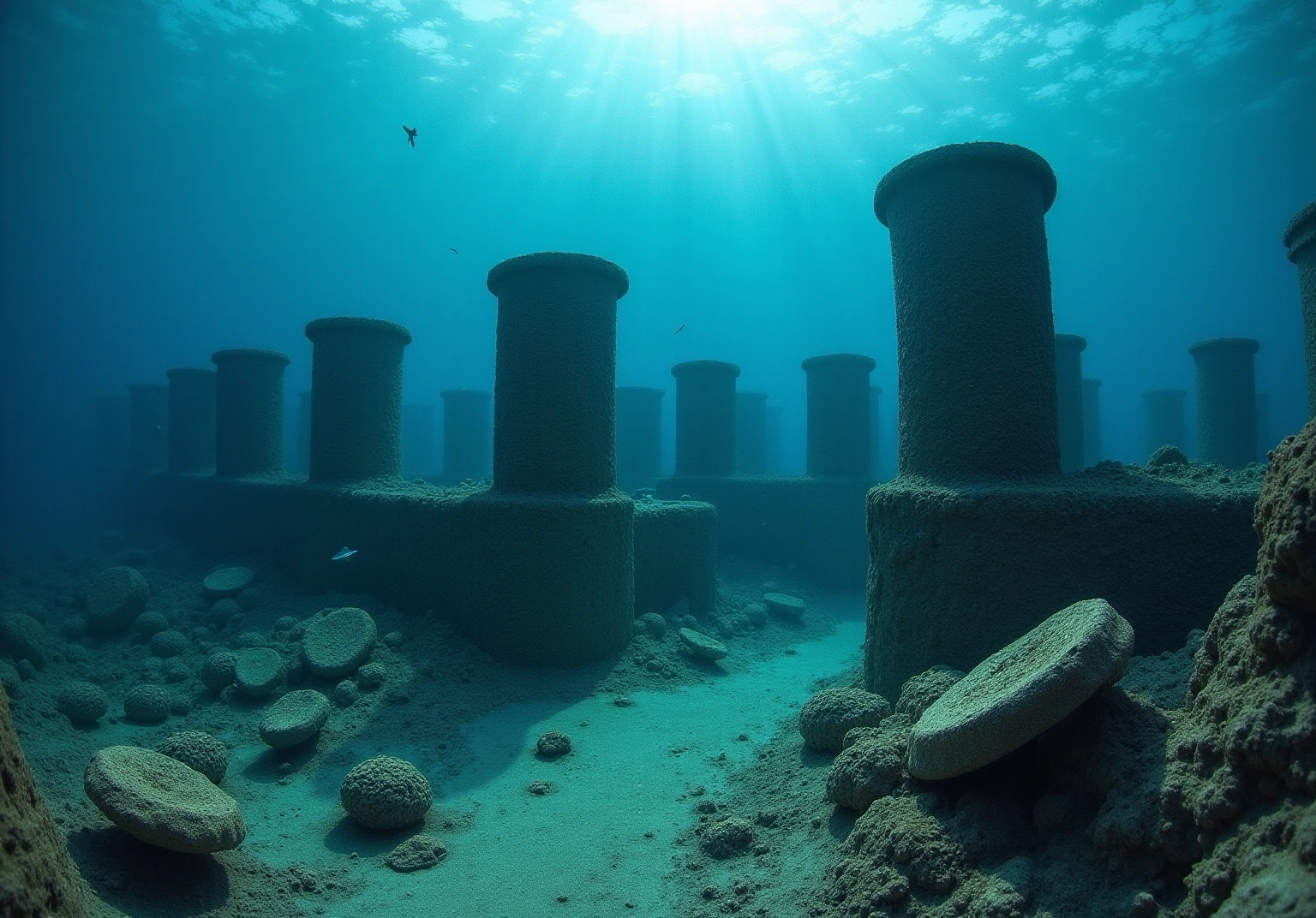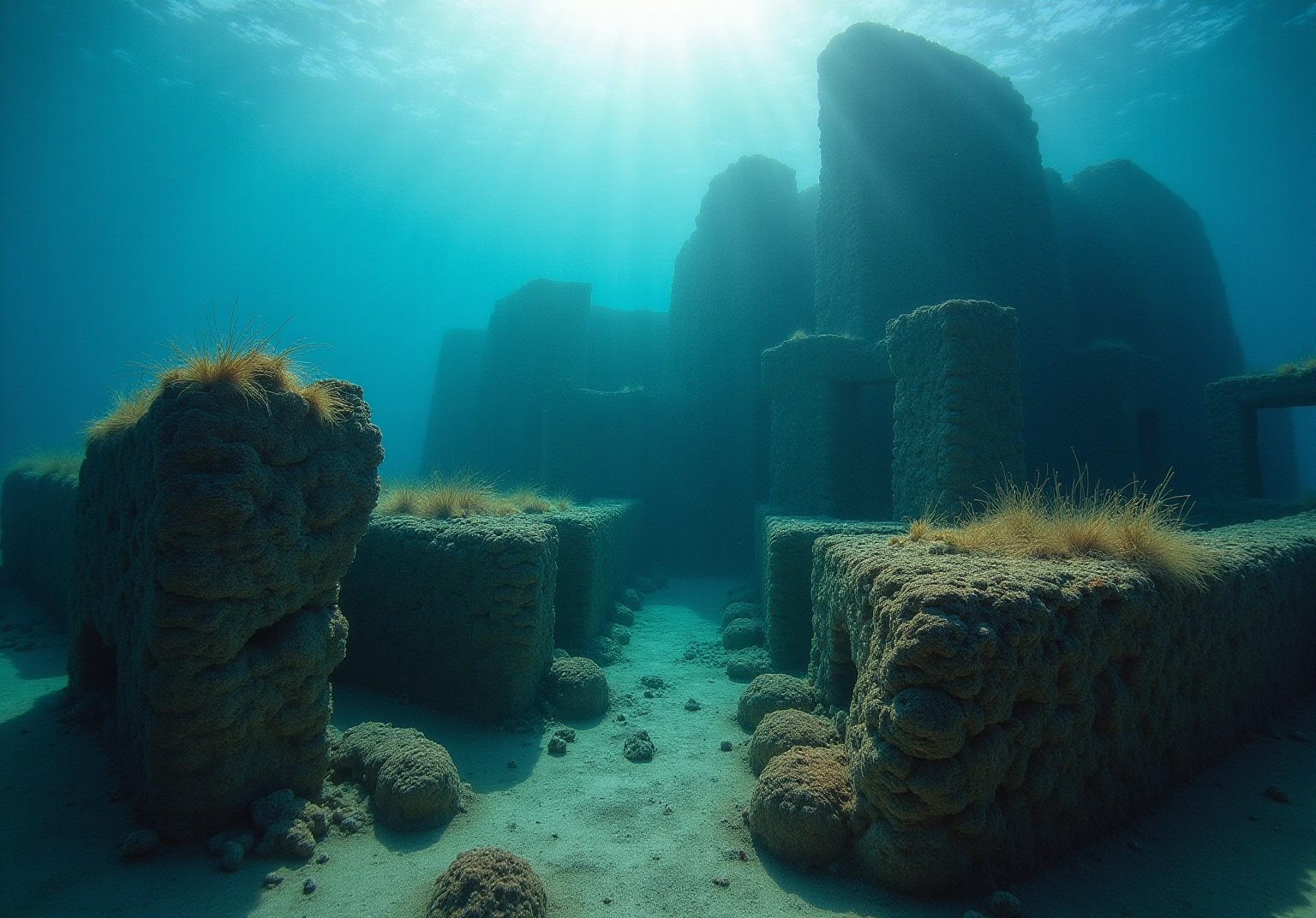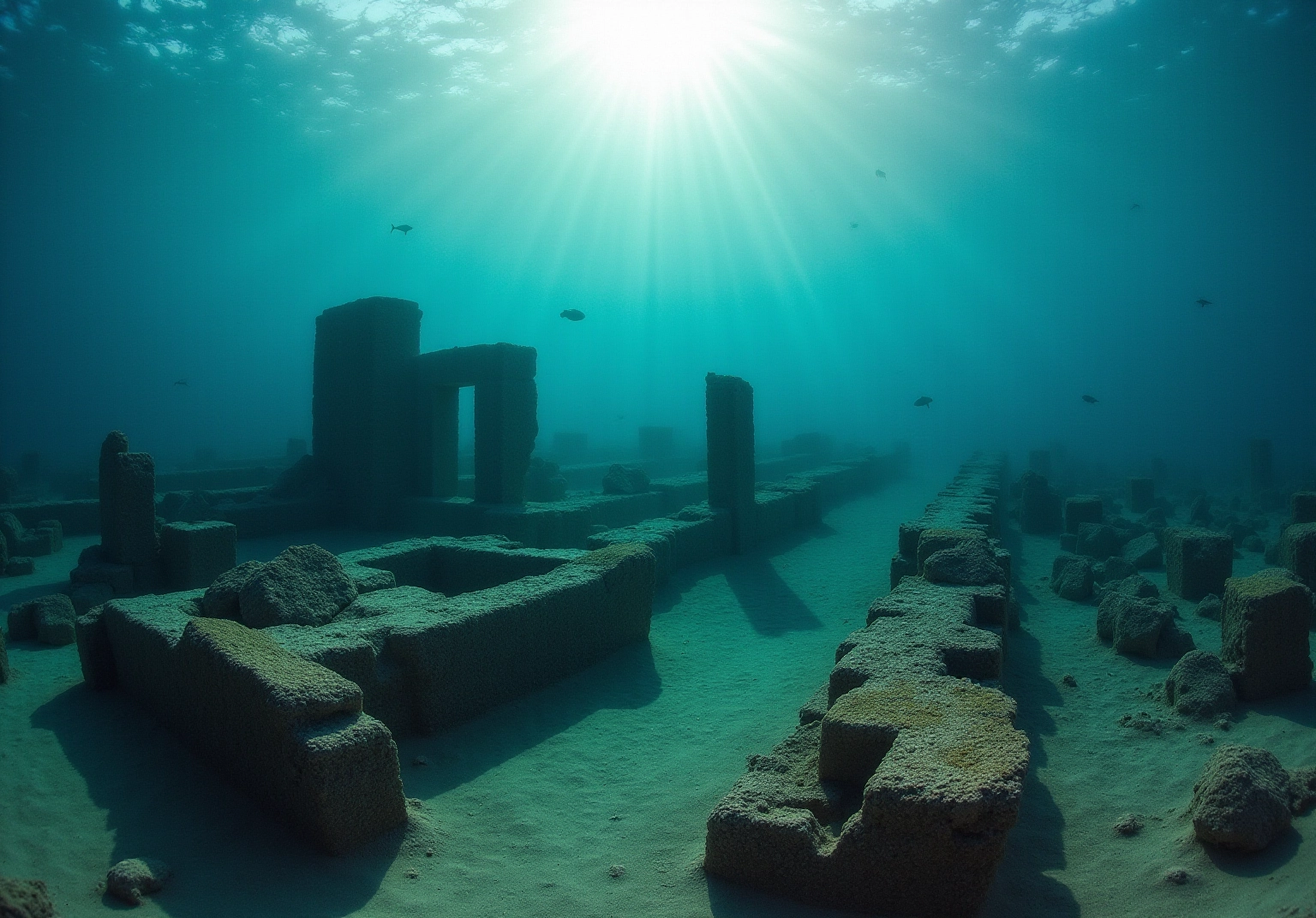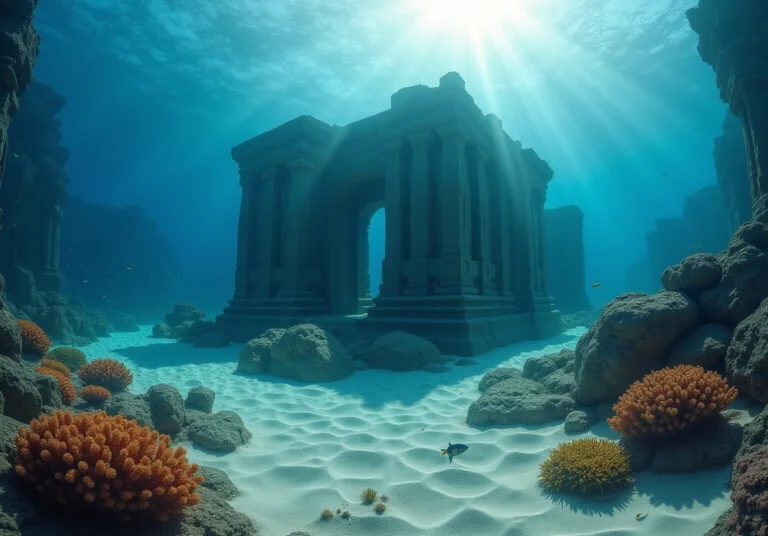Overview
Have you ever wondered about the fascinating cities that lie beneath the waves? This article takes you on a journey to explore the historical and environmental significance of these submerged marvels. They symbolize ancient civilizations lost to natural disasters and climate change, inviting you to reflect on their stories.
Imagine diving into the depths of the ocean to uncover sites like Thonis-Heracleion and Dwarka! These underwater treasures not only offer incredible archaeological insights but also serve as vital indicators of past sea levels and the effects of climate change. It’s a reminder of how important it is for us to think about conservation and smart urban planning as we face rising sea levels.
So, as you consider your next adventure, let these underwater cities inspire you! They’re not just relics of the past; they’re a call to action for all of us to engage with our environment and history in meaningful ways.
Key Highlights:
- Cities lost underwater symbolise remnants of ancient civilizations, submerged due to natural disasters and rising sea levels.
- Heracleion and Dwarka are notable examples, revealing rich historical and cultural contexts.
- Thonis-Heracleion was a major port city in ancient Egypt, rediscovered in 2000, showcasing significant archaeological finds.
- Dwarka, linked to Hindu mythology, is believed to hold ancient structures dating back over 32,000 years.
- Pavlopetri, Greece, is one of the oldest submerged settlements, offering insights into early urban planning.
- Port Royal, Jamaica, sank during a catastrophic earthquake in 1692, providing a unique perspective on pirate culture.
- Underwater cities serve as indicators of climate change, aiding in the understanding of past sea levels and geological shifts.
- Projected population increases in flood-prone areas highlight the urgency of addressing challenges posed by rising sea levels.
- Conservation of underwater heritage is vital for preserving history and supporting marine biodiversity amidst climate change.
Introduction
Imagine a once-vibrant city now lying silently beneath the waves, its stories obscured by time and water. These submerged metropolises, often remnants of ancient civilizations, offer you a unique glimpse into human history! They reveal the powerful forces of nature and the impact of climate change. As researchers delve into the mysteries of these underwater cities, they uncover not only archaeological treasures but also critical lessons about resilience and adaptation in our ever-changing world.
What secrets do these sunken sites hold, and how can they inform your understanding of the past and future of human settlements? Let’s dive in and explore together!
Define the Lost Underwater City
Imagine discovering a city lost underwater, a once-thriving metropolis now hidden beneath the waves! These fascinating locations, known as a city lost underwater, were once bustling with life but are now covered by water due to a mix of natural and human factors. They often symbolize the remnants of ancient civilizations, rich in history and culture, which became a city lost underwater due to rising sea levels, devastating earthquakes, or even intentional flooding.
You might find some sites partially submerged and still visible, while others, such as a city lost underwater, lie completely concealed beneath the ocean’s surface. Take Heracleion, for example, a city lost underwater in the Mediterranean. Its remarkable structures and artifacts tell us so much about its historical significance! And then there’s Dwarka, believed to date back to around 2000 BCE, which offers a glimpse into the lives of its residents before it became a city lost underwater beneath the Arabian Sea.
A striking illustration of nature’s power is the catastrophic earthquake and tsunami on June 7, 1692, which turned Port Royal, Jamaica, into a city lost underwater. It’s incredible to think about how these natural disasters can completely reshape urban landscapes!
Exploring the city lost underwater means diving into its origins, understanding why it sank, and appreciating its current state as an archaeological treasure. They continue to captivate researchers and historians alike. As marine archaeologist Franck Goddio beautifully put it, “In an instant, the town and all of its structures descended seven meters, and the ocean concealed everything.” So, are you ready to uncover the forgotten stories of human history and see how environmental changes have shaped our cultural heritage?

Explore Historical Context and Significance
Have you ever wondered about the fascinating stories behind the city lost underwater settlements? These mysterious locations are often tied to significant environmental changes and human activities. Take Thonis-Heracleion in Egypt or Dwarka in India, for example—once bustling hubs of commerce and culture, now they are considered a city lost underwater. The concept of a city lost underwater reflects broader themes like climate change, natural disasters, and the rise and fall of civilizations.
Let’s dive a little deeper! Thonis-Heracleion, a crucial port, is now considered a city lost underwater due to rising sea levels and seismic activity. This really illustrates how environmental factors can reshape human settlements over time. The importance of these sites isn’t just in their archaeological value; they also offer us valuable lessons about resilience and adaptation in the face of changing climates. So, as you explore these underwater wonders, think about the stories they hold and what they can teach us about our own world!

Examine Notable Examples of Underwater Cities
Have you ever wondered about the mysteries hidden beneath the waves? Let’s dive into some notable examples of a city lost underwater that tell incredible stories!
Thonis-Heracleion: Once a bustling port city in ancient Egypt, this remarkable place was rediscovered in 2000, revealing a treasure trove of archaeological wonders! Imagine temples and statues that illuminate its role as a major trade hub and religious center. So far, about 5% of this ancient settlement, covering an area of around 3.5 square kilometers (1.35 miles) and lying about 10 meters underwater, has been explored. Just think of the vast potential for future discoveries waiting to be uncovered!
Dwarka: Now, consider the mythical realm of Lord Krishna! This sunken settlement off the coast of India is not just a legend; it holds immense significance in Hindu mythology. Recognized as one of the seven holy pilgrimage centers, recent archaeological efforts aim to unearth its ancient structures, thought to date back over 32,000 years. Some artifacts even trace back at least 10,000 years, highlighting its historical and spiritual importance.
Pavlopetri: Situated off the coast of Greece, Pavlopetri is one of the oldest submerged settlements, dating back over 5,000 years! Its well-preserved ruins showcase advanced urban planning, providing us with valuable insights into the social and economic structures of ancient civilizations. What a fascinating glimpse into the past!
Port Royal: Known as the ‘Wickedest City on Earth,’ Port Royal sank during a catastrophic earthquake in 1692. Today, it serves as an important underwater archaeological site, revealing the intricacies of life in a place infamous for its pirates and treasure seekers. The remnants of this once-thriving metropolis offer a unique perspective on the cultural dynamics of the time.
Each of these locations not only provides a glimpse into the lives of their inhabitants but also raises intriguing questions about the environmental and geological factors that contributed to the city lost underwater. It’s a poignant reminder of the fragility of human settlements in the face of natural disasters. So, are you ready to explore these underwater wonders?

Analyze Scientific and Environmental Implications
Have you ever thought about the hidden treasures beneath the waves? The study of underwater settlements reveals fascinating scientific and ecological insights! These submerged sites serve as historical indicators of climate change, offering us valuable data on past sea levels and geological shifts. For example, research on these forgotten locations helps improve our existing climate models, boosting our ability to predict future patterns.
Now, here’s something to ponder: forecasts suggest that by 2060, the population living in the 100-year flood plain could soar from 189 million in 2000 to between 315 million and 411 million! This really highlights the urgent need to address the challenges posed by flooded urban areas.
But it’s not just about numbers—these archaeological wonders face threats from rising sea levels and human activities, stressing the importance of conservation initiatives. Did you know that the economic impact of sea level rise on small island states is estimated at 29 billion EUR by 2100? That’s a significant financial stake!
Protecting underwater cultural heritage is crucial—not just for preserving our historical narratives, but also for sustaining biodiversity within marine ecosystems. As climate change increasingly endangers coastal regions, the insights we gain from the city lost underwater can guide future city planning and environmental policies. This way, we can ensure a more resilient approach to development in vulnerable areas.
And there’s more! The National Oceanic and Atmospheric Administration predicts that hurricanes will become more intense, which further emphasizes the need for proactive measures in conservation and urban planning. So, let’s dive into these discoveries together and explore how we can make a difference!
Conclusion
Exploring cities lost underwater opens up a captivating story about the resilience and vulnerability of human civilization. These submerged sites, once bustling with life, now stand as poignant reminders of the environmental changes and natural disasters that have shaped our history. By understanding the significance of these locations, you not only enrich your knowledge of past cultures but also highlight the urgent need for awareness and action regarding climate change and its impacts on our modern urban landscapes.
Take, for instance, fascinating examples like:
- Thonis-Heracleion
- Dwarka
- Pavlopetri
- Port Royal
Each of these underwater cities holds a unique tapestry of stories, offering insights into ancient civilizations, their societal structures, and the environmental factors that led to their decline. The archaeological treasures uncovered from these sites not only deepen our historical understanding but also provide critical data that can inform future climate models and urban planning strategies.
Reflecting on the implications of these findings, it’s clear that the lessons learned from cities lost underwater extend beyond mere historical interest. They emphasize the importance of preserving our underwater cultural heritage and the ecosystems surrounding them. As the threat of rising sea levels and increased natural disasters looms, prioritizing conservation efforts becomes vital. Integrating these insights into our development policies can help us foster a more sustainable future while honoring the legacies of those who came before us. So, let’s take action together—our planet needs it!
Frequently Asked Questions
What is meant by a “city lost underwater”?
A “city lost underwater” refers to a once-thriving metropolis that is now submerged beneath water due to various natural and human factors, symbolizing the remnants of ancient civilizations rich in history and culture.
What are some reasons cities become lost underwater?
Cities may become lost underwater due to rising sea levels, devastating earthquakes, or intentional flooding.
Can you provide examples of cities that are lost underwater?
Examples include Heracleion, located in the Mediterranean, and Dwarka, believed to date back to around 2000 BCE, which is submerged beneath the Arabian Sea.
What significant event contributed to the submersion of Port Royal, Jamaica?
The catastrophic earthquake and tsunami on June 7, 1692, turned Port Royal into a city lost underwater.
What can be learned from exploring a city lost underwater?
Exploring a city lost underwater allows for an understanding of its origins, reasons for submersion, and appreciation of its current state as an archaeological treasure.
Why are underwater cities significant to researchers and historians?
Underwater cities captivate researchers and historians as they reveal forgotten stories of human history and illustrate how environmental changes have shaped cultural heritage.


































